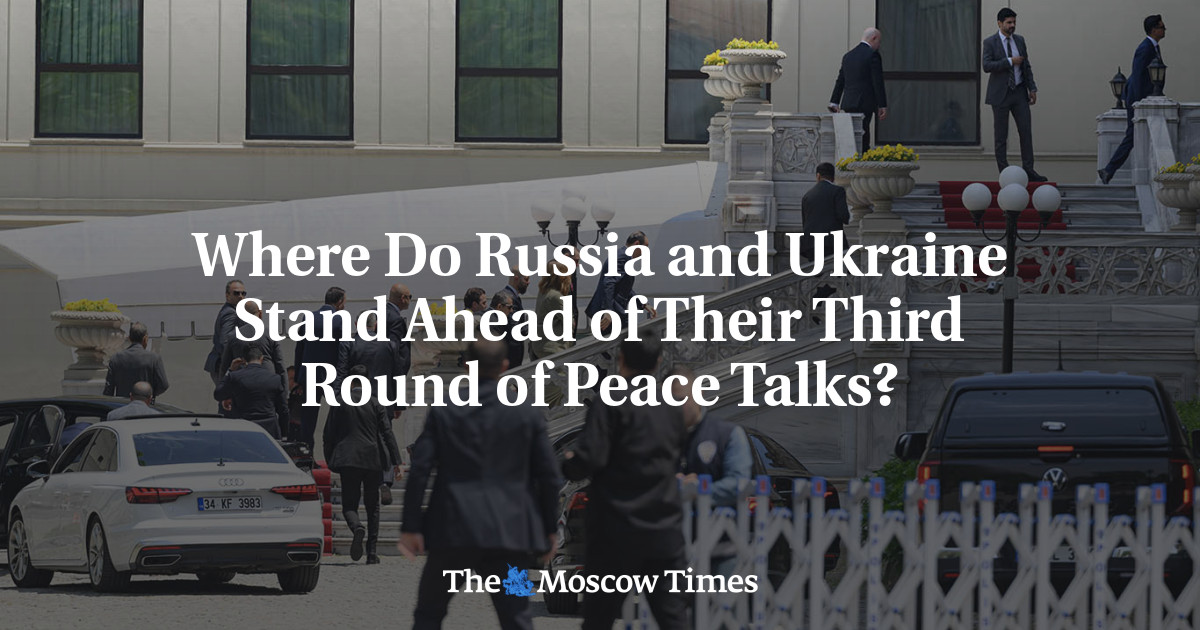
Where Do Russia and Ukraine Stand Ahead of Their Third Round of Peace Talks?
How did your country report this? Share your view in the comments.
Diverging Reports Breakdown
Where Do Russia and Ukraine Stand Ahead of Their Third Round of Peace Talks?
Moscow and Kyiv are set to hold their third round of direct peace talks in Turkey on Wednesday evening. The Russian delegation will once again be led by Kremlin aide Vladimir Medinsky. The two previous rounds of talks, held on May 16 and June 2, resulted in agreements to exchange 1,000 prisoners of war each as well as bodies of fallen soldiers. Both sides also exchanged draft memoranda outlining their respective visions for ending the war, with each side setting conditions seen by the other as nonstarters.. U.S. President Donald Trump has taken a more aggressive stance toward the Kremlin, issuing last week a 50-day deadline to resolve the war and allowing Europe to buy weapons for Ukraine. Washington would impose “very severe tariffs” at about 100% “if we don’t have a deal in 50 days,” Trump said, expressing that he was “very, very unhappy” with Russia.
Kyiv tasked Rustem Umerov, the head of its National Security and Defense Council, with leading the delegation. Umerov also led the previous two rounds of talks in May and June, when he was Ukraine’s defense minister. Other members of the Ukrainian team will include representatives from its military intelligence agency, the foreign ministry and the presidential office. What has already been achieved? The two previous rounds of talks, held on May 16 and June 2 in Istanbul, resulted in agreements to exchange 1,000 prisoners of war each as well as bodies of fallen soldiers. Both sides also exchanged draft memoranda outlining their respective visions for ending the war, with each side setting conditions seen by the other as nonstarters. An especially tense atmosphere hung over the second round of talks as Medinsky — who has published several history books that promote Russian nationalism — invoked the Great Northern War of 1700-1721 as evidence that Moscow was ready to continue fighting Kyiv for as long as it takes. Despite the relative lack of progress during these talks, Kremlin spokesman Dmitry Peskov said Tuesday that the “issue” of the war is “so complex that reaching an agreement on prisoner exchanges or the return of bodies is already a tangible outcome.” What is in the peace proposals? Ukraine’s latest framework reiterates that a full and unconditional ceasefire on land, sea and in the air for at least 30 days is a necessary prerequisite for negotiations. It also said that territorial issues can only be discussed after a ceasefire and that Russia’s territorial gains “are not recognized by the international community.” Russia’s version ties a ceasefire to Ukraine’s full withdrawal from the partially Moscow-held Donetsk, Luhansk, Zaporizhzhia and Kherson regions. According to documents published by state agencies, Moscow’s proposal also calls for an end to Ukrainian mobilization and Western military support for Kyiv, the withdrawal of foreign personnel from Ukraine and the formal recognition of Crimea and the four partially occupied regions as part of Russia.
The Russian memorandum also calls for Ukraine’s permanent military nonalignment and for restrictions on the size of its armed forces. Kyiv rejects these demands, saying that “Ukraine is not forced to be neutral. It can choose to be part of the Euro-Atlantic community and move towards EU membership.” “Ukraine’s membership in NATO depends on consensus within the Alliance,” the Ukrainian memorandum said. What has changed since the last meeting? While the front line remains largely unchanged since the second round of talks, the broader diplomatic landscape surrounding the war has shifted. U.S. President Donald Trump has taken a more aggressive stance toward the Kremlin, issuing last week a 50-day deadline to resolve the war and allowing Europe to buy U.S. weapons for Ukraine. Washington would impose “very severe tariffs” at about 100% “if we don’t have a deal in 50 days,” Trump said, expressing that he was “very, very unhappy” with Russia. There also would be “secondary tariffs” that target Russia’s remaining trade partners if a peace deal is not reached by then.
